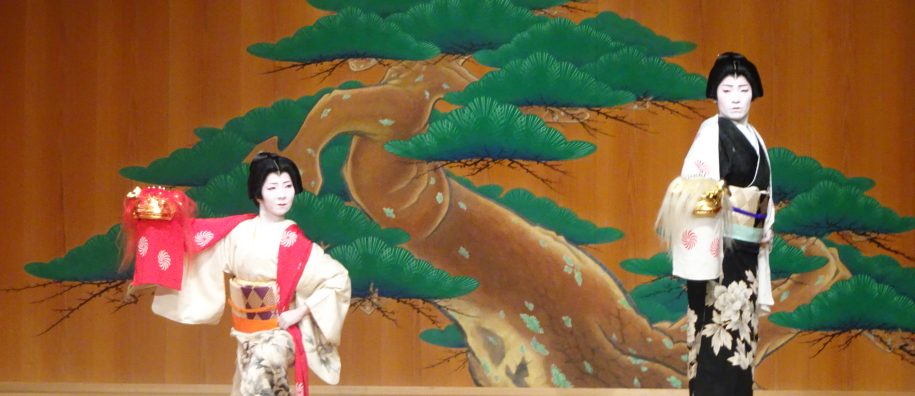
Japanese traditional dances will be performed at Mykolas Romeris University on May 8.
For the first time in Lithuania, Yusumire Otowa, the head of the Otowa-ryu School of Traditional Japanese Dance, and Koho Otowa, a teacher, will demonstrate the art of dance. The dancers have demonstrated their skills at many popular Japanese dance festivals, community festivals, schools and orphanages.
Japanese legends say that after an argument between the storm god Susanoo and his sister Amaterasu, the Sun Goddess, she retreated into a cave and spread darkness in the world. She was finally pulled out of the cave by the dance of Uzume, the goddess of fun. From mythical times to the present day, dance has developed in many different ways in different parts of Japan, but it has always been part of Japanese culture.
"The universal language of dance helps to reveal Japan's history, traditions, and distinctive worldview, many aspects of which are close to our own," says Violeta Gaižauskaitė, Advisor to the Rector of the Mykolas Romeris University (MRU) on International Relations and Communication, and former diplomat of the Lithuanian Embassy to Japan.
The programme of the Japanese dancers' performance at MRU includes the "Festive Dance" (Sanbaso), the dances "The Maiden of the Wisteria" (Fujimusume), "The Story of the Tamagawa River" and the Japanese dance lesson "Sakura-sakura".
Former Japanese Ambassador to Lithuania Toyoei Shigeeda will welcome guests to the event.
The performance of Japanese dancers will take place on 8 May at 16:00 in the 201 Auditorium of Mykolas Romeris University (Ateities str. 20, Vilnius).
More about the dances in the programme:
SANBASO (三番翁) (Festive dance):
The dance is praying for huge harvest, good health and descendant prosperity. Sanbaso was so loved and requested in Japan that it was performed at a marriage ceremony as well as an opening event. The bell being used in the performance is said to be an amulet which will protect one from evil.
FUJIMUSUME (Wisteria Maiden):
Fujimusume is the most famous and popular program among the Kabuki and Nihon-buyo performances. A fairy coming out of the picture into the world has happened to fall in love with a man. She is however getting frustrated with the man. So she finally back to the picture when the temple bell started ringing in the evening. The fairy girl is coming up to stage with a sprig of wisteria in her hand. The love of her is described in the performance after she has put aside the sprig on the ground.
TAMAGAWA (The story of the Tamagawa River):
Tamagawa river is a source of water supply for Tokyo. In the past people bleached their cotton clothes at Tamagwa river. The dance is describing dynamically the flow and move of the clothes at the river by utilizing two hand fans (Ohgi).
SAKURA - SAKURA (Cherry Blossom): dance lesson
This is traditional Japanese music for singing in chorus or for dancing alone or in group. It is describing with joy the cherry blossoms in full bloom. The Japanese traditional music which is one of the most popular and cherished music in Japan. And also loved abroad. In Lithuania there are many places of Sakura trees planted. Mykolas Romeris University also enjoying Hanami ir Universitie’s Sakura garden.
Biographies of the dancers
Otowa Yusumire joined Otowa-ryu Nihon-buyo School in May 1987, and took up the post of Head Teacher at Otowa-ryu in December 2019. In 2023, she became a student of Kikuzo Otowa, the 3rd Grandmaster of Otowa-ryu. Otowa Yusumire first appeared in the Irodori group in 2001 and in the Kayo-kai group in 2017. Since then she has given performances every year.
Otowa Koho joined the Otowa-ryu Nihon-buyo school in April 1993. In 1999, the stage name Otowa Koho was given. In 2002 she took up the position of head teacher at Otowaryu. In April 2023 she became a student of the 3rd Otowa-ryu Grandmaster Kikuzo Otowa. Since 2001 she has been performing in the Irodori group and Kotogiku-kai, and has been an active participant in various events since then.